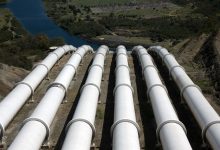Australian energy developers Sunshine Hydro and Energy Estate have announced a partnership to develop up to 4.5GW of long-duration energy storage in Victoria that could be integrated with new renewable generation and green hydrogen production.
The new joint venture will focus on several large-scale pumped-hydro energy storage projects across the state, with plans to integrate green hydrogen production and be paired with new renewable generation capacity.
The two companies are also looking at other long duration energy storage technologies, such as flow batteries, solar thermal, compressed air, and hydrogen storage.
The so-called “super-hybrid” concept is similar to that the two companies unveiled recently in Queensland, although both are at very early stages. The Queensland project at least has a location in central Queensland.
The Victoria venture has emerged in the light of the state’s newly announced target of reaching 95 per cent renewables by 2035, and effectively close down coal generation by that time.
“Our aim is to replace the dispatchable capacity which will be lost once the coal-fired power stations in the LaTrobe Valley retire and support the development of a green hydrogen industry in Victoria,” said Michael Myer, chair of Sunshine Hydro.
“We don’t see ourselves competing with big batteries, much needed new transmission, Snowy 2.0, or even the Battery of the Nation.
“As we rapidly electrify and move away from fossil fuels, we need to all understand that building new large scale deep energy storage is vital – for consumers and industry.”
Energy Estate is also heavily involved in developing offshore wind projects in Australia and New Zealand in partnership with BlueFloat Energy, along with other long duration storage projects in NSW.
Simon Currie, the co-founder of Energy Estate, says the new joint venture will focus on how to maximise the repurposing of existing transmission infrastructure in areas like the LaTrobe Valley .
“At the heart of our joint venture with Sunshine Hydro is a commitment to partner with local communities, workers and traditional owners.
“We can’t get to a cleaner future without building new projects and infrastructure but we can promise to do this in a way which puts outcomes for communities, workforces and the environment first.”










